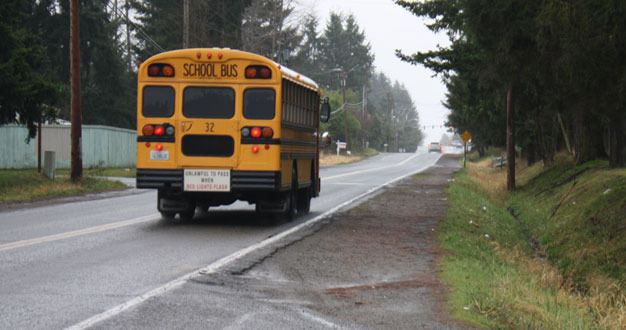Kent city officials are considering using $1 million from the new business and occupation (B&O) tax to help pay for the $7 million upgrade and widening of Southeast 256th Street on the East Hill.
Crews will upgrade an old, sub-standard section of Southeast 256th Street from the “Y” intersection at Kent-Kangley Road to 116th Avenue Southeast. The changes will improve traffic flow, access to businesses and homes and safety for vehicles and pedestrians by adding a center turn lane to form a three-lane road; adding bicycle lanes and sidewalks; installing street lights; and improving traffic efficiency by rebuilding intersections and re-timing traffic signals, according to city staff reports.
City officials also are forming a Local Improvement District (LID) to charge fees to property owners who benefit from the project to raise a total of about $2 million.
The rush is on by city staff to get the project funded because a $2 million grant awarded six years ago to the city from the state Transportation Improvement Board will be taken back and given to another jurisdiction if the city isn’t ready to start construction by July 1.
“Why it has taken so long to get off the ground is the $2 million grant awarded for pedestrian safety needs a (funding) match and when the economy went downhill we didn’t find a matching source,” Public Works Director Tim LaPorte said to the City Council’s Public Works Committee on Jan. 14.
LaPorte said the asphalt overlay component of Southeast 256th Street makes the project eligible for the B&O tax fund. The council approved a new B&O tax last year that started Jan. 1 and is expected to raise about $5 million in 2013 to help repair streets.
Councilwoman Dana Ralph, however, questioned whether the B&O tax should be used for the project.
“I believe the project needs to move forward for the safety of children and so we do not lose the grant money,” Ralph said at the meeting. “But my concern is the B&O money that the group of citizens met about did not have this project on the list.”
Council President Dennis Higgins said he prefers a different funding option for the project than the B&O tax that the council adopted for street repairs rather than new construction.
“The portion for the (asphalt) overlay makes sense but I still would like to find an alternate source,” Higgins said.
Councilwoman Elizabeth Albertson said the 256th Street work needs to get going.
“We have not looked at the B&O list yet but if we are going to lose money then this is the No. 1 project to get done,” Albertson said.
LaPorte said a Transportation Impact Fee (TIF) approved in July 2010 by the council would raise about $1 million for the project.
Under the ordinance, the city charges TIFs up front to new retail and residential developments as well as when pre-existing structures see a major change in use. The rate of the TIF depends on the kind of development being proposed. Single-family residences pay a different rate than a hotel, as would a warehouse, or a movie theater. The key is how much more traffic each development would put on Kent’s roads.
“The economy has been so low that nothing has come in the door,” LaPorte said about the TIF funds so far. “But now with development picking up we anticipate about $1 million.”
The city has used LIDs to pay for numerous projects. A total of 370 properties would be impacted by the 256th LID with payments spread out over 15 years.
The formation of a LID is scheduled to go to the full council on Feb. 5 to set a public hearing date, which is expected to be March 5 in front of the council.
LaPorte said the 256th project would take about two years to complete. He said it could take up to nine months for the power company to move utilities from overhead wires to underground wires.
The city has targeted this section of Southeast 256th Street for improvement for many years.
“There are a lot of apartment complexes in the area with school-aged children who catch buses and high schoolers who walk,” said city design engineering manager Mark Howlett. “There are a lot of people who walk in the area to businesses. It has a single travel lane in each direction and no sidewalks.”
Southeast 256th Street project
(Potential $7 million funding sources)
• $2 million state grant
• $2 million Local Improvement District
• $1 million city B&O tax
• $1 million city Transportation Impact fee
• $1 million city drainage utility fund
Talk to us
Please share your story tips by emailing editor@kentreporter.com.
To share your opinion for publication, submit a letter through our website https://www.kentreporter.com/submit-letter/. Include your name, address and daytime phone number. (We’ll only publish your name and hometown.) Please keep letters to 300 words or less.

